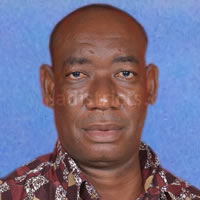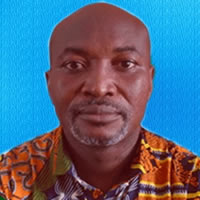Health Care
The provision of quality health care delivery remains one of the top priorities of the District. However, the existing condition and distribution of Health Facilities is poor leading to poor access to quality health care delivery.
Health Facilities
The following are the health facilities available in the District.
Kpandai Poly-Clinic (New)
Kpandai Health Centre
Kpandai ECG Health Centre
Oti River Poly-Clinic
Kitare Clinic
Bladjai Clinic
Kumdi Clinic
Loloto Clinic
Gulbi Quarters Clinic
Sobonjida Clinic
Lonto Health Centre
Buya Health Centre (New)
For the people in the District to have access to modern health care, its means that more health centres and clinics are to be opened to augment the twelve health facilities currently serving the over 96,000 people in the District.
Health Personnel
It is not only the limited health facilities that the District is struggling with, but personnel to man these facilities are virtually not available. Of all the ten health facilities in the District, there is no medical doctor and currently there are only four medical assistants in four of the facilities.
Ten Top Diseases in the District
The major diseases in the district ranked in terms of most prevalent include the following:
Table 1.24: Ten Top Causes of Consultation
Disease 2008 (%) 2009 (%)
Malaria 52 55.17
Diarrhoea 13 10
Skin Diseases 10 6
RTI 5 3
Gastroenteritis 3 2
Intestinal Worms 5 2
Hypertension 2 1
Anaemia 3 5
Snake Bite 1 2
STI 1 1
Four Top Causes of Maternal Death
In terms of maternal deaths, the following are the four top causes in the District
• Haemorrhage (bleeding)
• Eclampsia ( pregnancy induced hypertension)
• Sepsis (infection after delivery)
• Obstructed labour
It is worth adding that all the health facilities are concentrated at the urban and semi- urban settlements but 85% of the settlements in the district are rural. In more specific terms about 65% of the populations (consisting of villages that are situated far off the major towns) have limited access to the orthodox system of health delivery. The nature of access roads linking the health facilities to the rural settlements is so poor that it takes the rural dwellers an average of 5 hours travelling time to be able reach the nearest health facility.
Challenges of the Health Sector
The health sector is besieged with a number of problems. Among them are:
1. Inadequate health personnel
2. Lack of a district hospital
3. Inadequate residential and office accommodation for health personnel
4. Inadequate logistics
5. Inadequate health facilities
6. Poor road network
7. Lack of ambulance services
HIV & AIDS
There exist in the district institutional structures for fighting HIV/AIDS. These are the District AIDS Committee and District Response Initiative and Management Team.
However, they are not active on ground due to inadequate funding of their activities. In spite of all these numerous challenges, some education and campaigns are on-going on stigmatization, prevention and control as well as awareness creation among the people in the district. Also, know your status campaigns were carried out in the District.
Unlike other districts, the district has recorded few incidences of HIV/AIDS cases this may be due to the fact that people are not willing to go for the test.
The total number of reported cases of HIV/AIDS in the district in 2009 was 15 patients with 6 out of the 15 patients coming from Kitare which by this will constitutes the higher risk area in the District. PmTCT services had started in the antenatal clinics by trained counsellors.
Gender Analysis
Majority of farmlands are owned by the traditional authorities/rulers and some lands are family owned and are therefore inherited by family members.
However, the lands for farming are virtually free; no fee is charged when a farmer uses the land for crop production except when he/she decides to reward the family or the rightful landowner.
Also, in terms of gender, majority of the farmlands are owned by men who control both the physical and natural resources whilst few women have access to farmlands. Children (both boys and girls) do not own land at all.
This practice is a very healthy one and has the propensity to increase the food security in the district because lands are readily released to individuals to go into food production without any hindrance and at no cost
.
Below is a tabular distribution of accessibility of resources on gender-basis in percentage estimation:
Table 1.27: Accessibility of Resources on Gender-basis
Resources Men Women
Land 80% 20%
Seeds 70% 30%
Tools/machinery 90% 10%
Labour 80% 20%
Cash/money 70% 30%
Water Bodies 100% 0%
Date Created : 11/18/2017 6:25:02 AM





 facebook
facebook twitter
twitter Youtube
Youtube TOLL FREE 0800 430 430
TOLL FREE 0800 430 430 +233 593 831 280
+233 593 831 280 GPS: GE-231-4383
GPS: GE-231-4383 info@ghanadistricts.com
info@ghanadistricts.com Box GP1044, Accra, Ghana
Box GP1044, Accra, Ghana